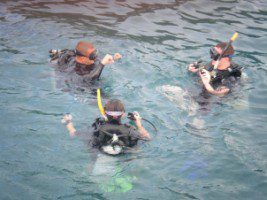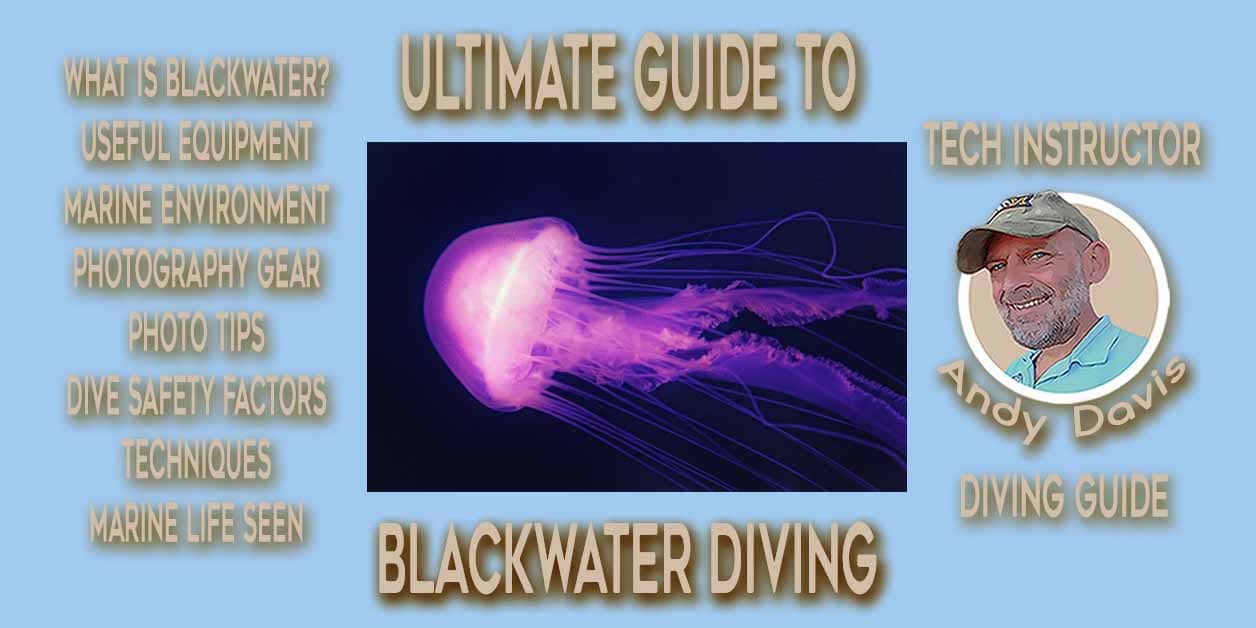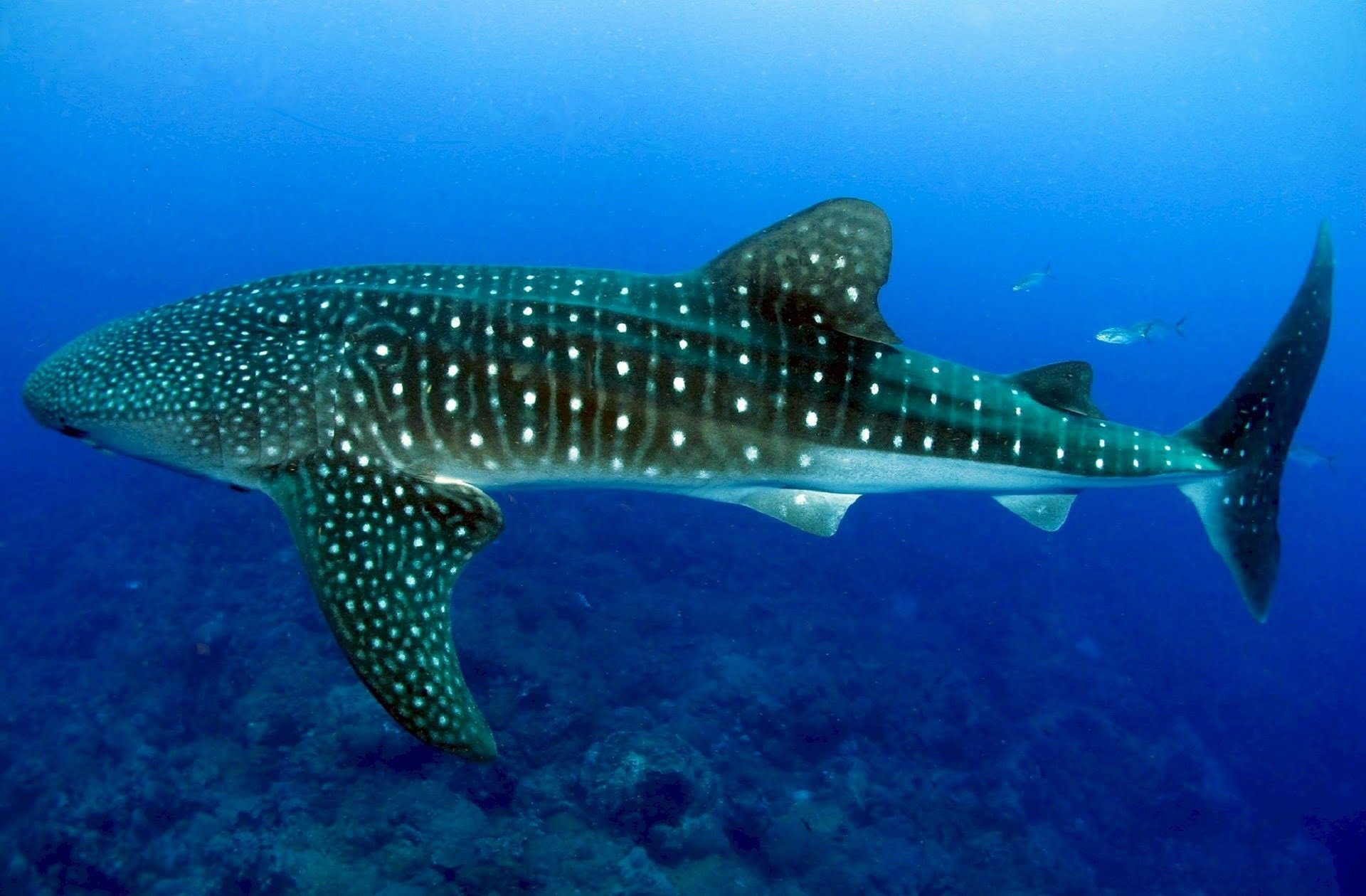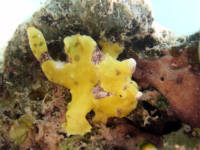The 10 Best Muck Diving & Macro Photography Sites in the World
Diving enthusiasts and underwater photographers are always on the lookout for the next best destination to explore and capture stunning images of marine life. The world offers a vast array of underwater wonders, each with its unique set of attractions and challenges. In this article, I will explore the top 10 muck diving and macro photography sites in the world.
Whether you are a seasoned diver or a beginner, these destinations offer some of the best opportunities to witness and photograph the beauty of the underwater world. So, grab your diving gear and underwater camera, and let’s dive into the top 10 muck diving and macro photography sites in the world.
What is muck diving?
Muck diving is a type of diving that takes place in areas with sandy or muddy bottoms, rather than coral reefs or rocky environments. These areas are often overlooked by divers, but they can be home to a diverse range of rare and unusual marine species.
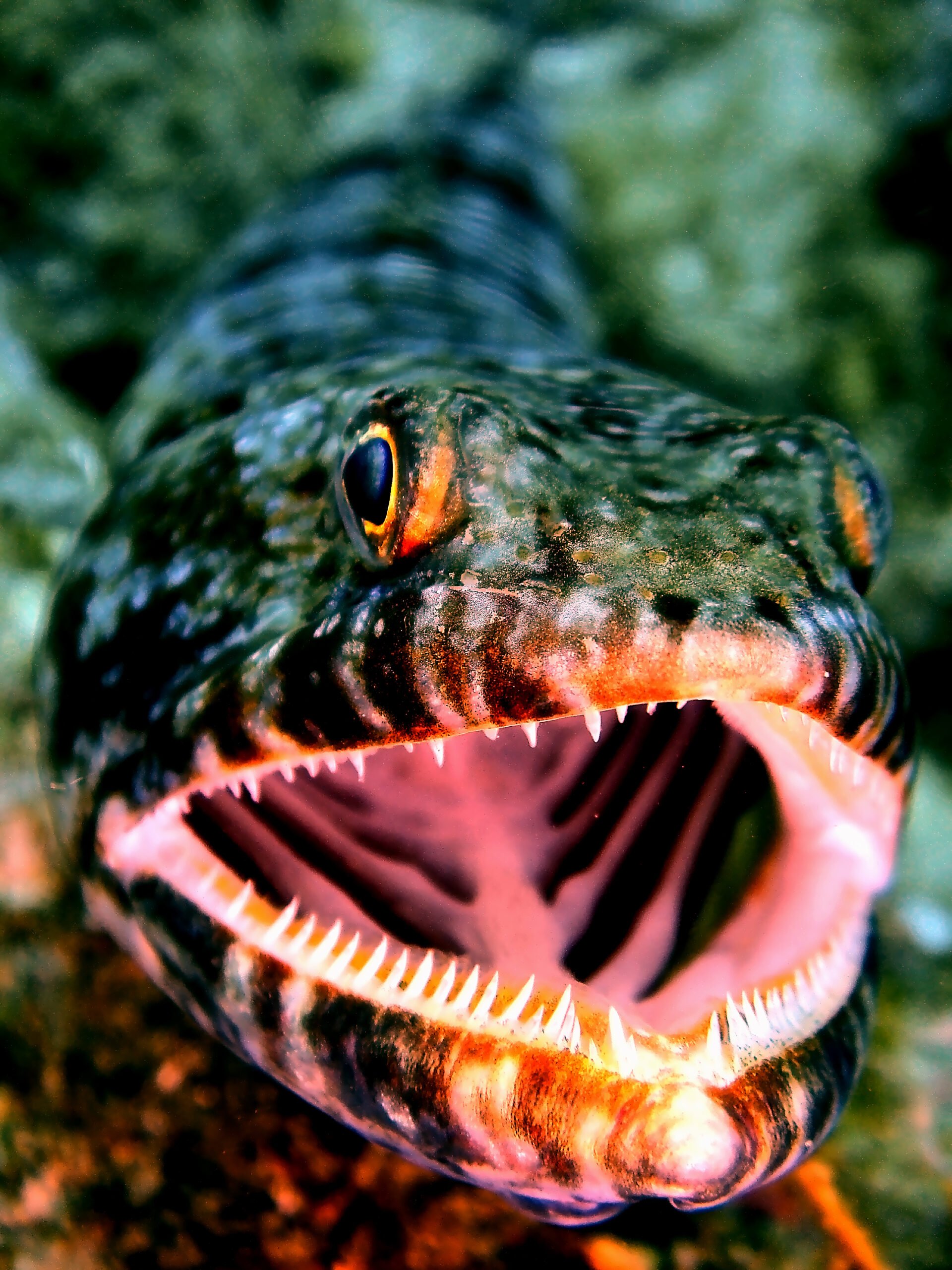
Muck diving provides an opportunity for divers to observe and photograph these creatures in their natural habitat. The term “muck” refers to the sediment on the seabed, which can be stirred up during a dive, reducing visibility but also creating a unique and fascinating diving experience.
The Top-10 best muck diving sites in the world
The best muck diving sites are popular with divers for several reasons. Here are 5 criteria that make the top sites stand out from the rest:
- Unique marine life: The best muck diving sites are known for their unique and rare marine life, including unusual critters, macro species, and other exotic creatures. Divers are attracted to these sites for the opportunity to see and photograph marine life that they may not find anywhere else.
- Diversity: The best muck diving destinations can offer a diversity of marine life, as well as different types of environments such as volcanic sand, seagrass beds, and mangroves. This diversity can be particularly attractive to experienced divers who have already explored more typical coral reef environments.
- Ease of access: The best muck diving locations are located close to shore, making them easily accessible for both beginner and experienced divers. This can also make them more affordable and less time-consuming to explore than other, more remote dive sites.
- Shallow depths: The best muck diving locations are at shallow depths. This offers underwater photographers longer bottom times to capture more images.
- Water conditions: The best muck diving areas are located in areas with calm waters and good visibility, making them ideal for underwater photography and videography.
Overall, the best muck diving locations offer unique and rewarding experiences for divers who are interested in exploring the fascinating and diverse world of marine life.
1. Lembeh Strait, Indonesia
Lembeh Strait is a world-renowned destination for muck diving and macro photography. Located in North Sulawesi, Indonesia, this narrow strait is home to a diverse array of marine life and critters, making it a favorite among underwater photographers.
Best muck diving critters to photograph in Lembeh
- Lembeh Sea Dragon
- Hairy Frogfish
- Pygmy Seahorse
- Blue Ringed Octopus
- Flamboyant Cuttlefish
- Wunderpus
- Ambon Scorpionfish
- Mimic Octopus
- Rhinopias
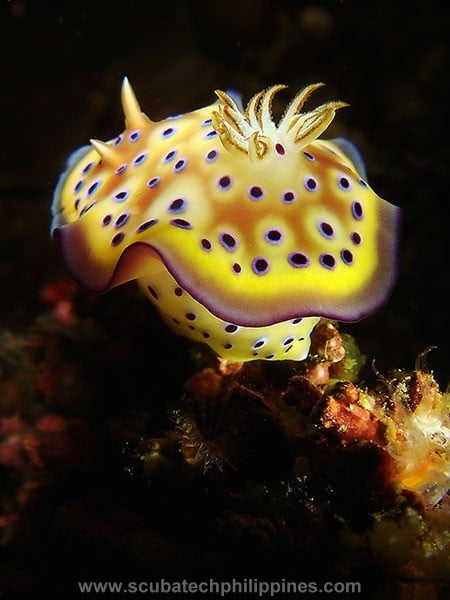
The best time to muck dive in Lembeh
Lembeh Strait can be dived year-round, but the best time for macro photography is during the dry season from April to November. During this time, visibility is at its best, and there is typically less rain and wind. However, it’s important to note that critters can be found in Lembeh Strait all year long, so diving during the wet season from December to March can still be rewarding.
2. Anilao, Philippines
Anilao, located in the Batangas province of the Philippines, is another popular destination for muck diving and macro photography. This small town on the coast of the Calumpang Peninsula is home to some of the world’s most diverse marine life and is known for its excellent macro opportunities.
Best muck diving critters to photograph in Anilao
- Nudibranchs
- Seahorses
- Frogfish
- Ghost Pipefish
- Pygmy Squid
- Blue Ringed Octopus
- Flamboyant Cuttlefish
- Emperor Shrimp
- Hairy Shrimp
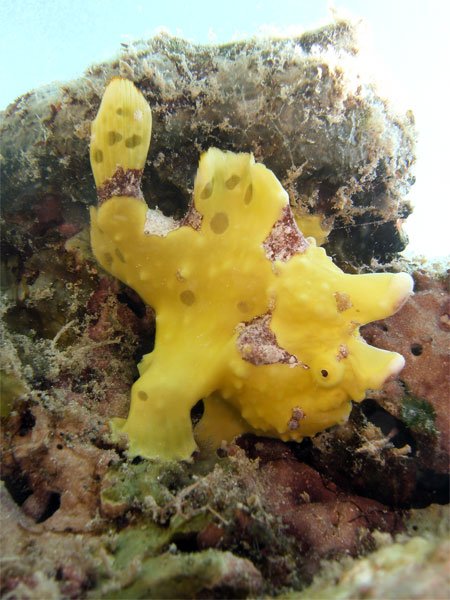
The best time to muck dive in Anilao
Anilao can be dived year-round, but the best time for macro photography is during the dry season from November to May. During this time, the visibility is at its best, and the water temperature is warmest. However, critters can be found in Anilao throughout the year, so diving during the wet season from June to October can still be rewarding.
3. Ambon Bay, Indonesia
Ambon, located in the Maluku Islands of Indonesia, is a hidden gem for muck diving and macro photography. This remote location offers some of the best macro opportunities in the world and is home to several unique critters that cannot be found anywhere else.
Best muck diving critters to photograph in Ambon
- Psychedelic Frogfish
- Hairy Octopus
- Rhinopias
- Ambon Scorpionfish
- Flamboyant Cuttlefish
- Cockatoo Waspfish
- Harlequin Shrimp
- Bobbit Worms
- Pygmy Seahorses
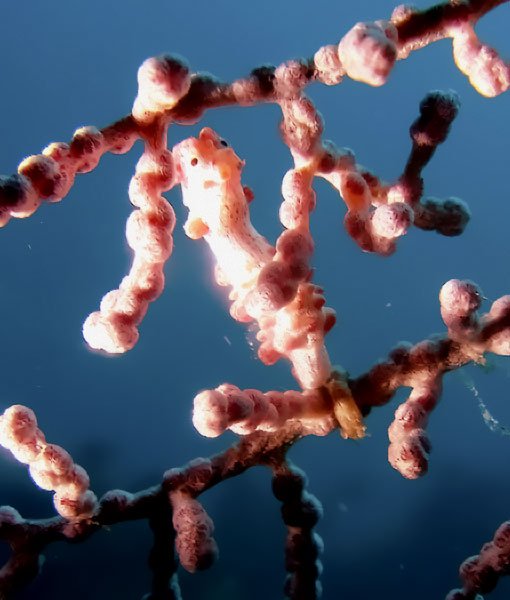
The best time to muck dive in Ambon
Ambon can be dived year-round, but the best time for macro photography is during the dry season from April to November. During this time, visibility is at its best, and there is typically less rain and wind. However, diving during the wet season from December to March can still be rewarding, and it’s a great time to see some of the rarer critters that come out during this time.
4. Mabul Island, Malaysia
Mabul is a small island located off the coast of Sabah in Malaysia. It is known for its incredible macro diving and is a haven for underwater photographers looking to capture images of some of the world’s most elusive marine life.
Best muck diving critters to photograph at Mabul Island
- Frogfish
- Seahorses
- Ghost Pipefish
- Scorpionfish
- Blue-Ringed Octopuses
- Nudibranchs
- Mandarinfish
- Ornate Ghost Pipefish
- Crocodile fish
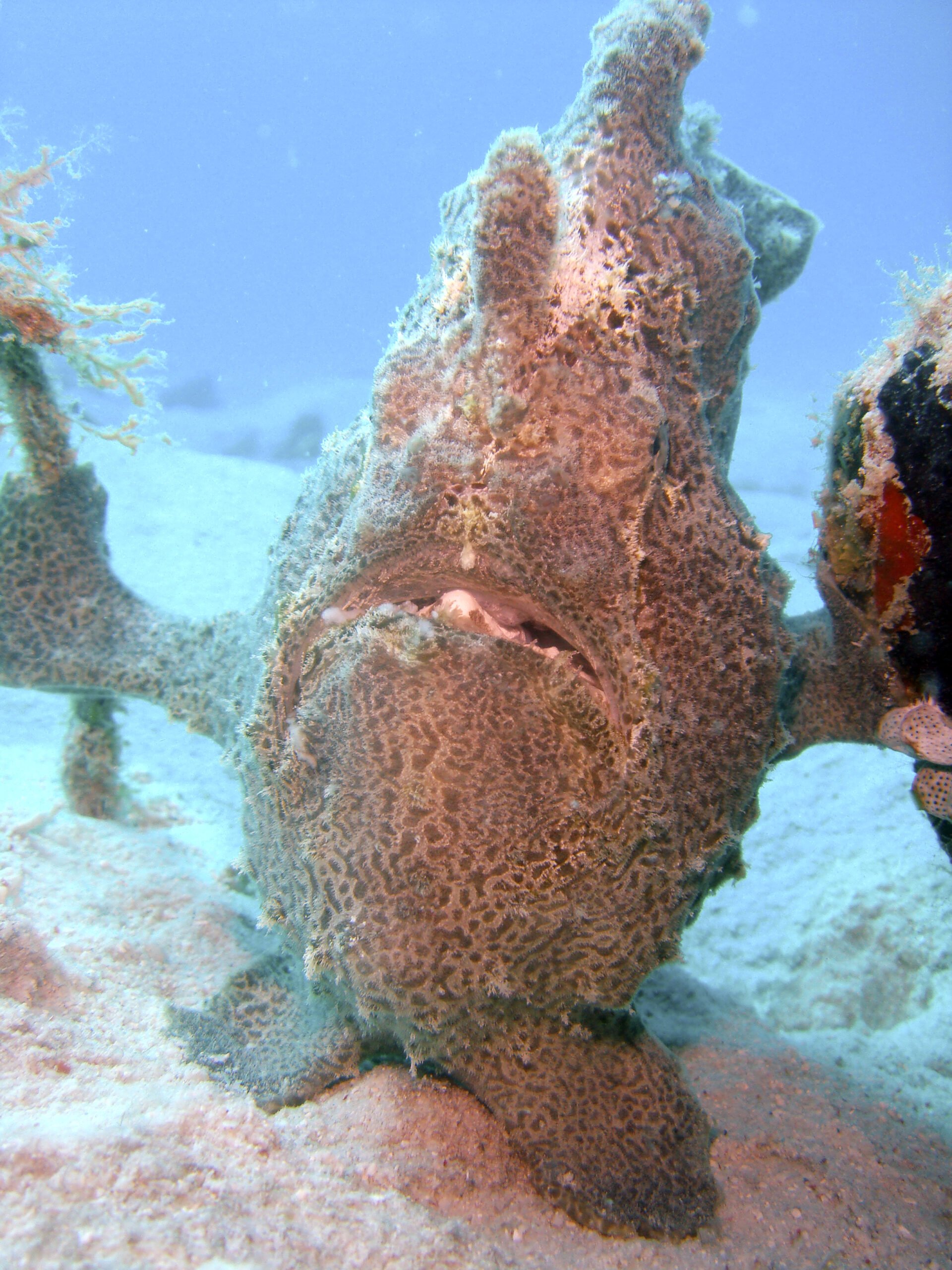
The best time to muck dive at Mabul Island
Mabul is a year-round diving destination, but the best time to dive is between April and December when the water is at its calmest and the visibility is at its best. The water temperature is warm and comfortable throughout the year, making it an ideal location for both novice and experienced divers. Mabul is also home to some excellent night diving opportunities, allowing divers to see a whole new world of marine life.
5. Puerto Galera, Philippines
Located on the island of Mindoro in the Philippines, Puerto Galera is a popular diving destination known for its stunning coral reefs, colorful marine life, and easy accessibility from Manila.
Best muck diving critters to photograph in Puerto Galera
- Mandarinfish
- Nudibranchs
- Seahorses
- Pygmy Seahorses
- Scorpionfish
- Cuttlefish
- Frogfish
- Giant Clams
- Anemonefish
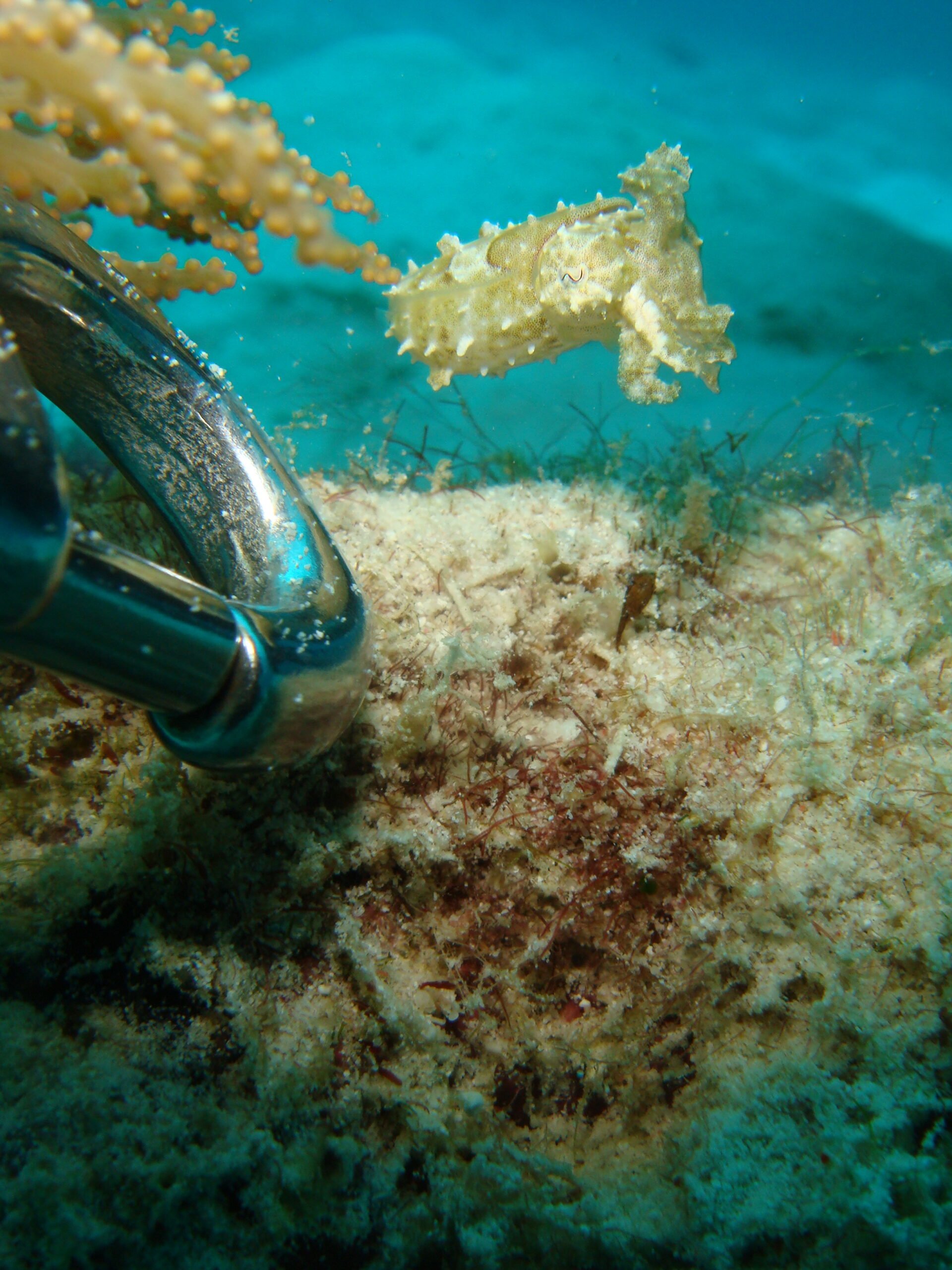
The best time to muck dive in Puerto Galera
Puerto Galera is a year-round diving destination, but the best time to dive is between November and May when the water is at its clearest and calmest. During these months, visibility can reach up to 30 meters, allowing for spectacular underwater photography opportunities.
The water temperature is warm and comfortable throughout the year, making it an ideal location for both new and experienced divers. Puerto Galera is also home to a variety of dive sites, ranging from shallow coral gardens to deep drift dives, providing plenty of options for divers of all levels.
6. Wakatobi, Indonesia
Wakatobi, located in Southeast Sulawesi, Indonesia, is a remote and exclusive destination for muck diving and macro photography. This pristine marine ecosystem is known for its healthy coral reefs and diverse marine life, including some of the rarest critters in the world.
Best muck diving critters to photograph in Wakatobi
- Flamboyant Cuttlefish
- Pygmy Seahorses
- Rhinopias
- Blue Ringed Octopus
- Wonderpus
- Hairy Frogfish
- Nudibranchs
- Harlequin Shrimp
- Mimic Octopus
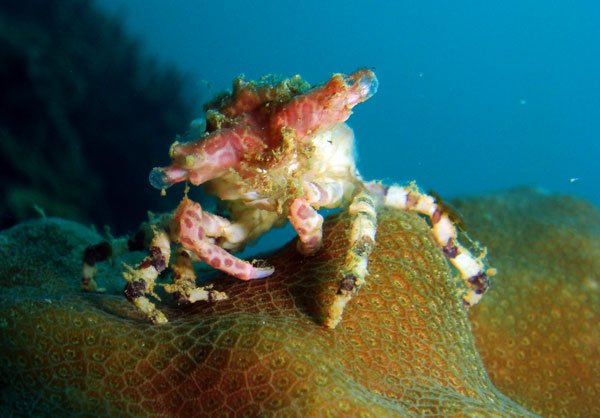
The best time to muck dive in Wakatobi
Wakatobi can be dived year-round, but the best time for macro photography is during the dry season from April to November. During this time, visibility is at its best, and there is typically less rain and wind. However, diving during the wet season from December to March can still be rewarding, and it’s a great time to see some of the rarer critters that come out during this time.
7. Milne Bay, Papua New Guinea
Milne Bay, located on the eastern tip of Papua New Guinea, is known for its incredible biodiversity and world-class muck diving and macro photography opportunities. With its clear waters and stunning coral reefs, it’s no wonder that Milne Bay has been named one of the top diving destinations in the world.
Best muck diving critters to photograph in Milne Bay
- Mandarin Fish
- Bobbit Worms
- Flamboyant Cuttlefish
- Blue Ringed Octopus
- Pygmy Seahorses
- Ghost Pipefish
- Frogfish
- Nudibranchs
- Rhinopias
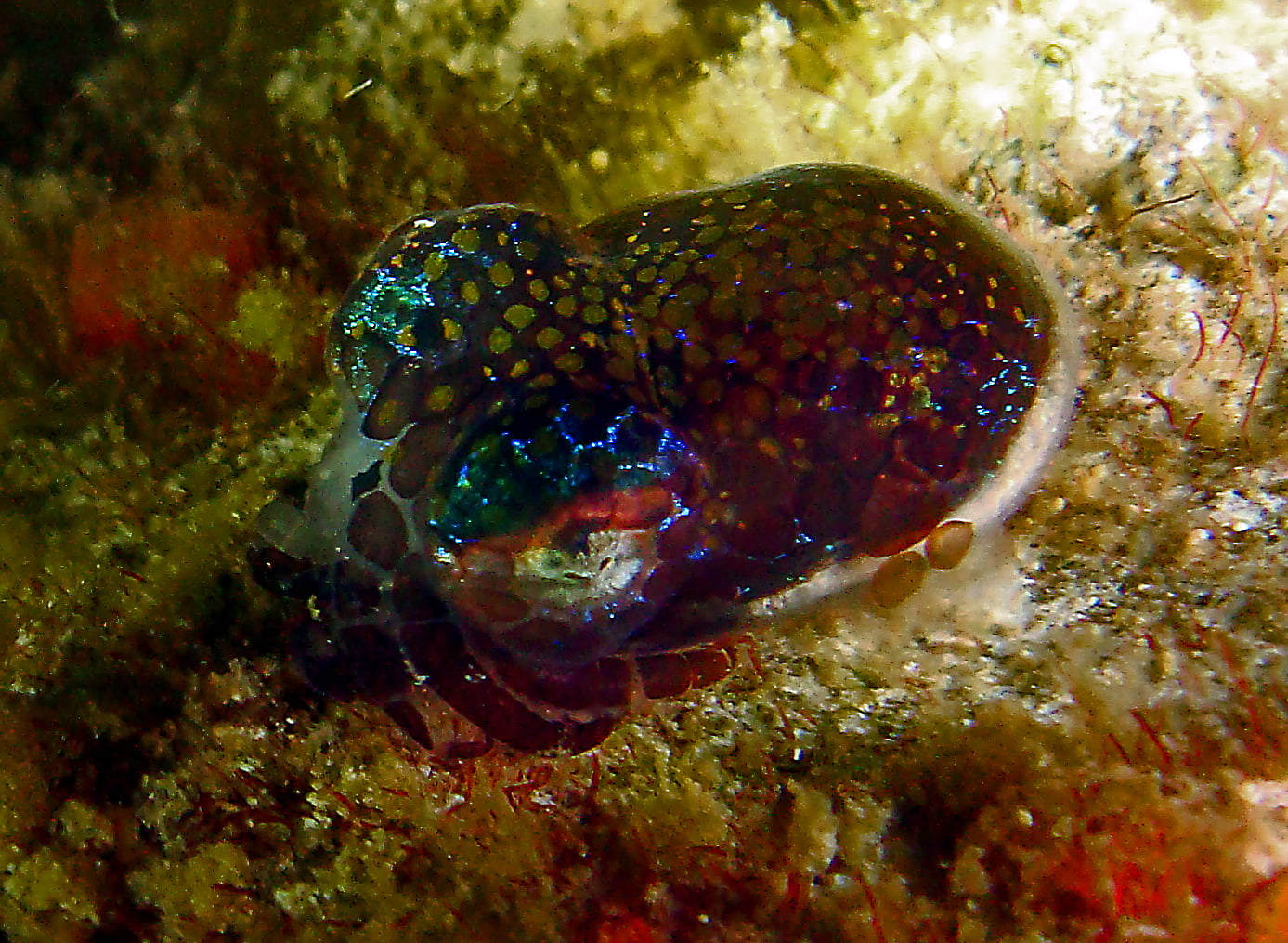
The best time to muck dive in Milne Bay
The best time to dive in Milne Bay is between November and April when the water is warmest and the visibility is at its best. However, diving is possible year-round, and even during the wet season, the underwater visibility can still be good. Milne Bay is known for its strong currents, so it’s important to dive with a reputable dive operator who knows the area well.
8. Dauin, Philippines
Dauin, located on the island of Negros in the Philippines, is a popular destination for muck diving and macro photography. This small town is home to several world-class dive resorts and is known for its pristine reefs and excellent macro opportunities.
Best muck diving critters to photograph in Dauin
- Blue Ringed Octopus
- Mimic Octopus
- Flamboyant Cuttlefish
- Seahorses
- Nudibranchs
- Ghost Pipefish
- Harlequin Shrimp
- Frogfish
- Bobbit Worms
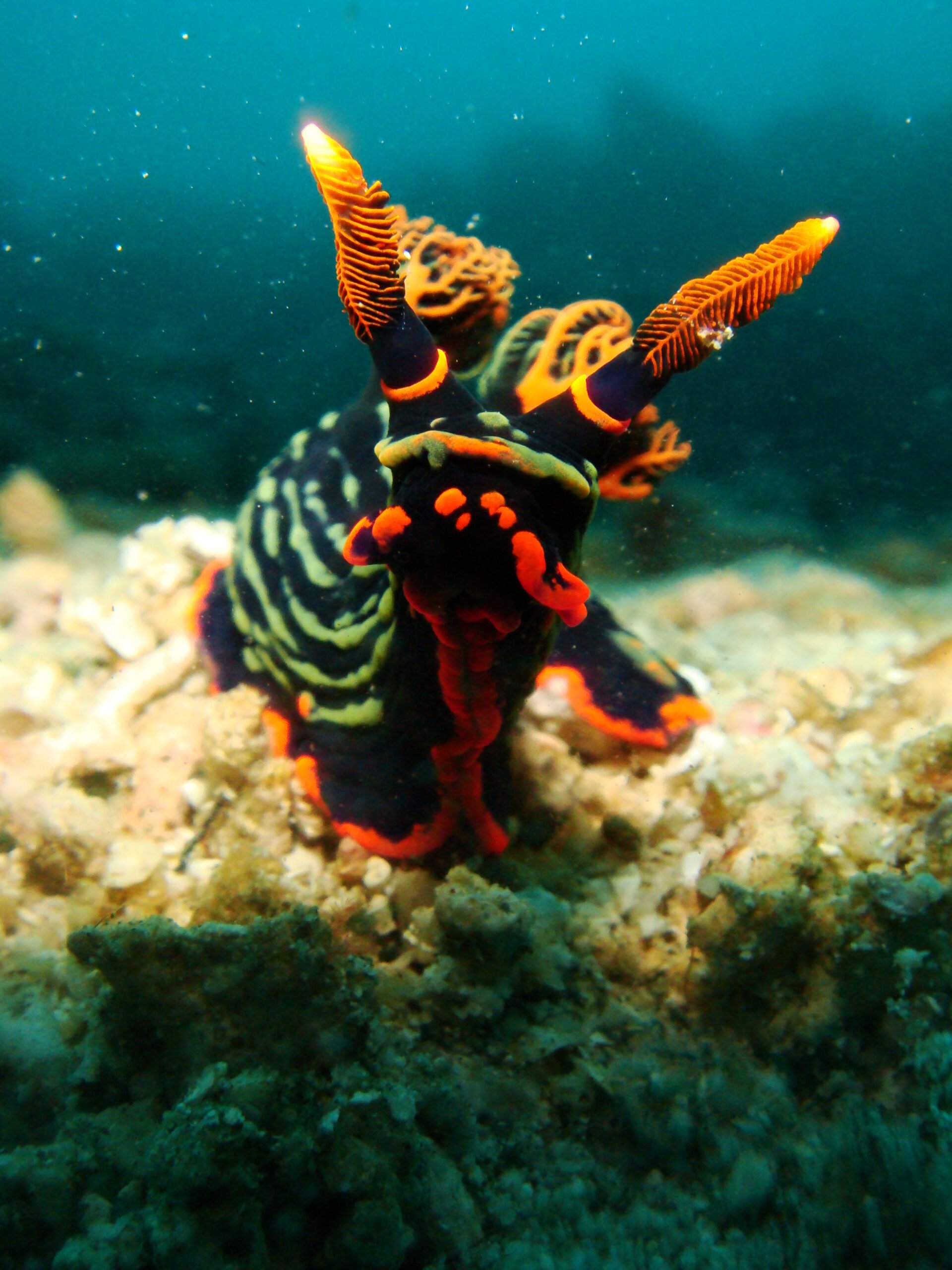
The best time to muck dive in Dauin
Dauin can be dived year-round, but the best time for macro photography is during the dry season from November to May. During this time, the visibility is at its best, and the water temperature is warmest. However, critters can be found in Dauin throughout the year, so diving during the wet season from June to October can still be rewarding.
9. Raja Ampat, Indonesia
Raja Ampat, located off the coast of West Papua, Indonesia, is a remote and breathtakingly beautiful archipelago that is widely regarded as one of the best diving destinations in the world. With its crystal-clear waters, vibrant coral reefs, and a staggering diversity of marine life, Raja Ampat is a must-visit location for any serious diver or underwater photographer.
Best muck diving critters to photograph in Raja Ampat
- Nudibranch
- Leopard Sharks
- Pygmy Seahorses
- Mandarin Fish
- Mimic Octopus
- Harlequin Shrimp
- Cuttlefish
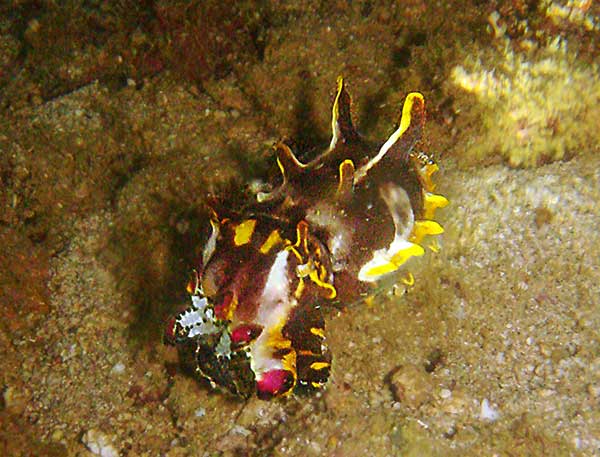
The best time to muck dive in Raja Ampat
The best time to dive in Raja Ampat is between October and April when the water is calmest and the visibility is at its best. During these months, the water temperature is warm and the weather is dry. However, Raja Ampat is a year-round diving destination, and diving during the other months can still be fantastic. Raja Ampat is a protected marine reserve, and diving is strictly regulated, so it’s important to dive with a reputable dive operator who follows sustainable and responsible diving practices.
10. Romblon, Philippines
Romblon is an archipelagic province located in the central part of the Philippines. It is composed of 20 islands, each offering a unique diving experience. Romblon is an emerging dive destination known for its vibrant coral reefs, abundant marine life, and crystal-clear waters.
Best muck diving critters to photograph in Romblon
- Mandarinfish
- Nudibranch
- Scorpionfish
- Frogfish
- Wonderpus
- Harlequin shrimp
- Frogfish
- Stonefish
- Ghost pipefish
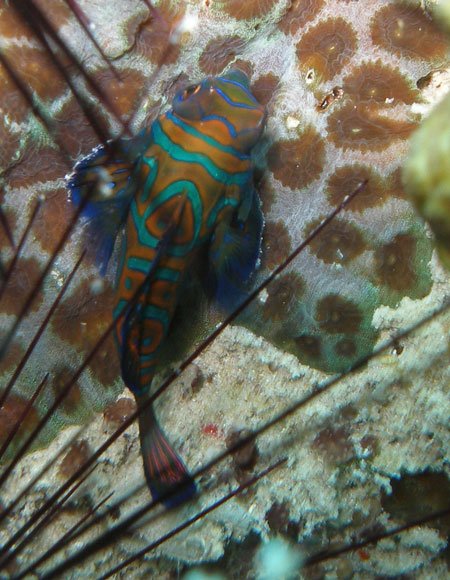
The best time to muck dive in Rombon
The best time to dive in Romblon is between December and May when the water is calm and visibility is at its best. The water temperature is warm and comfortable throughout the year, ranging from 26°C to 30°C. Romblon’s dive sites are suitable for all levels of divers, from beginners to advanced, and offer diverse diving experiences, such as walls, pinnacles, drifts, and wrecks. Romblon is also known for its exceptional macro photography opportunities, with numerous species of nudibranchs, crustaceans, and other small critters thriving in the area’s rich waters.
Macro underwater photography
Macro underwater photography is the art of taking close-up photographs of small marine creatures and underwater plants. It involves using specialized camera equipment and techniques to capture the intricate details of these tiny subjects, such as the texture of their skin or the pattern of their scales.
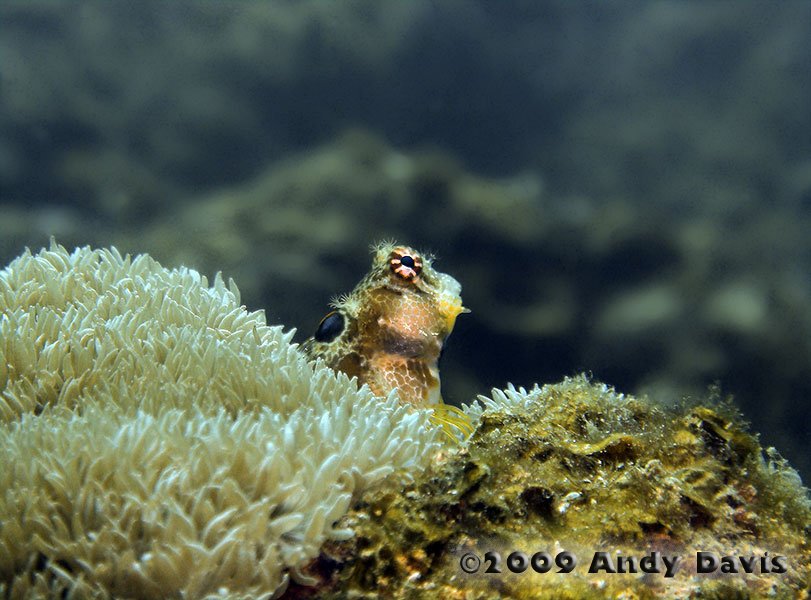
Macro photography allows photographers to reveal the beauty and complexity of small creatures that are often overlooked in the vast expanse of the underwater world. By bringing these tiny creatures into focus, macro photography provides a unique and captivating perspective on the diversity of marine life.
Underwater camera gear needed for macro photography
Macro underwater photography requires specialized gear to capture the intricate details of small marine life. Here are some of the essential equipment and accessories for macro underwater photography:
- Macro Lens: A dedicated macro lens is the most important piece of gear for macro photography. It allows you to get close to your subject and capture fine details.
- Housing: A camera housing is necessary to protect your camera from water damage. You will need an underwater housing that is specifically designed for your camera model.
- Strobe or Flash: An external strobe or flash is crucial for lighting your subject and bringing out the details. Underwater, the available light is often limited, so a strobe or flash is necessary to get good results.
- Focus Light: A focus light helps you to see and focus on your subject in low-light conditions. It also helps to reduce the time it takes to focus on your subject.
- Wet Lens: A wet lens can be attached to the front of your camera lens to increase magnification and enable you to get even closer to your subject.
- Red Filter: A red filter helps to correct the color in your photos by removing the blue and green tints that are often present in underwater photos.
By using the right gear and techniques, you can capture stunning macro underwater photographs that reveal the beauty and diversity of the underwater world.
Recommended underwater photography books
Tips for muck diving macro photography
Here are some tips for muck diving underwater photography:
- Choose the right equipment: Invest in a good quality camera with a macro lens to capture small subjects and details in the environment. Consider using a strobe or external light source to illuminate your subject and bring out its colors.
- Adjust your settings: Adjust your camera’s aperture, shutter speed, and ISO to suit the lighting conditions and the subject you are photographing. Experiment with different settings to find the best balance between depth of field, shutter speed, and ISO.
- Get close: Get as close to your subject as possible without disturbing it or damaging the environment. This will help you capture the small details and textures that make muck diving photography so interesting.
- Pay attention to the background: Look for interesting or complementary backgrounds that enhance your subject and add depth and dimension to your photo.
- Shoot from different angles: Experiment with different angles and perspectives to add interest and variety to your shots. Try shooting from below, above, and from the side to capture your subject in different poses and settings.
- Be patient: Muck diving photography requires patience and persistence, as many of the subjects are small and may move quickly or be difficult to find. Take your time and be prepared to spend several dives exploring an area to find the best subjects.
- Respect the environment: Remember to respect the marine environment and avoid touching or disturbing the subjects you are photographing. Be mindful of your fins and equipment, and take care not to damage fragile marine life or disturb the sediment.
By following these tips and practicing regularly, you can improve your muck diving underwater photography skills and capture stunning images of the unique and fascinating marine life that inhabits these environments.
Get started with the best muck diving and macro underwater photography
In conclusion, muck diving and macro photography offer a unique opportunity to explore the hidden beauty of the underwater world.
With the right gear and techniques, you can capture stunning photographs of tiny marine creatures and plants, revealing the intricate details and stunning colors that are often overlooked.
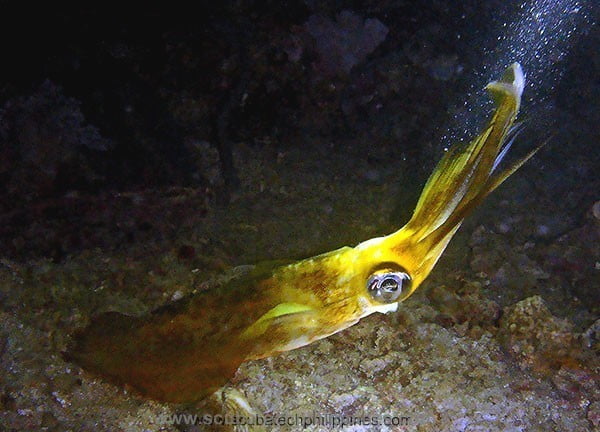
Whether you’re a seasoned underwater photographer or just starting out, there are plenty of amazing muck diving and macro photography destinations around the world to discover.
From the Philippines to Indonesia and beyond, these sites offer a chance to experience some of the most fascinating and diverse marine ecosystems on the planet. So grab your camera, don your diving gear, and start exploring the amazing world of muck diving and macro photography today!
About The Author

Andy Davis is a RAID, PADI TecRec, ANDI, BSAC, and SSI-qualified independent technical diving instructor who specializes in teaching sidemount, trimix, and advanced wreck diving courses.
Currently residing in Subic Bay, Philippines; he has amassed more than 10,000 open-circuit and CCR dives over three decades of challenging diving across the globe.
Andy has published numerous diving magazine articles and designed advanced certification courses for several dive training agencies, He regularly tests and reviews new dive gear for scuba equipment manufacturers. Andy is currently writing a series of advanced diving books and creating a range of tech diving clothing and accessories.
Prior to becoming a professional technical diving educator in 2006, Andy was a commissioned officer in the Royal Air Force and has served in Iraq, Afghanistan, Belize, and Cyprus.
In 2023, Andy was named in the “Who’s Who of Sidemount” list by GUE InDepth Magazine.
Purchase my exclusive diving ebooks!
Muck diving FAQ
Muck diving is macro underwater photography on silty dive sites that contain a variety of small and rare marine life.
The main attraction to muck diving is amazing opportunities for macro photography with rare and beautiful marine life.
The most famous muck diving sites are in SE Asia. Lembeh and Raja Ampat in Indonesia, Mabul in Borneo, and Anilao and Dauin in the Philippines.
Macro marine life, such as; Pygmy Seahorses, Mimic Octopuses, Flamboyant Cuttlefish, Hairy Frogfish, Ornate Ghost Pipefish, and a wide variety of nudibranchs.
Originally posted 2023-04-14 15:15:39.







